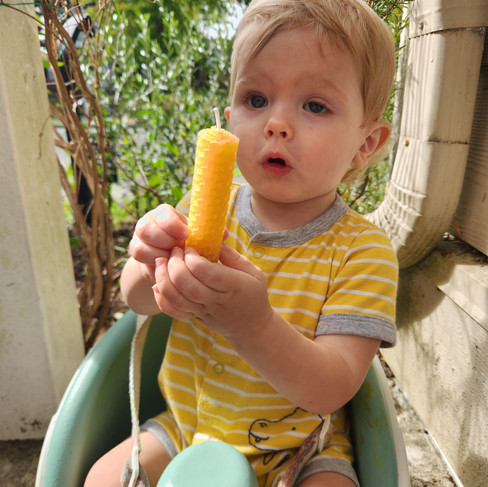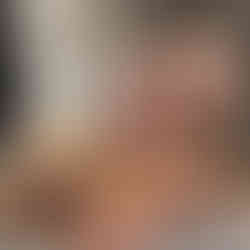"B" For The Bees.
- Whitney Stohr
- Sep 26, 2024
- 3 min read
Today was a fun day in home education.
We are learning about the Letter B this week.
In between our other activities, our field trips, medical and therapy appointments, and homeschool meetups, I typically plan day-long "unit" or "theme" studies twice weekly.
Today, we learned all about "B for Bees" and beehives, beeswax, and honey.
We began our day as we usually do -- by talking about our letter of the week and practicing writing the letter.
Next, to kick off our day of BEES, my boys watched a short kid's video on YouTube about bees, generally, and apiculture (beekeeping).
The video was shared by kid content creators Oliver & Lucas. (We have actually used several of their videos to expand our learning on different subjects, including their video on aquariums last week as we studied the "Letter A.")
After the video, for some sensory exploration and to reinforce what was shared in the video, I introduced a slice of real honeycomb on a plate.

I can never be quite certain how sensory activities will be received. As a sensory-seeker, my older son is typically quite interested in different sensory activities and willing to explore various textures and sensations. However, sometimes, these attempts are wholly rejected, which is also totally fine. The important thing is that the opportunity is presented, and we can engage in learning around a topic, whether that is through sensory engagement or discussion.
Luckily, my son grabbed for the honeycomb straight away. He had fun playing in the stickiness and smooshing the honeycomb. (It was a bit of a sensory nightmare for me, but such is life. I truly practice stepping-back and let them explore, and simply, get over myself and my sensory hang-ups.)

After a quick wash and change of clothes, we turned to our art project for the day, which actually doubled as a second sensory activity. A double win!
We used a big sheet of bubble wrap and yellow finger paint to get our hands a bit dirty (or dirtier? Or re-dirtied?!), spreading the paint all around. We talked about how the honeycomb looked and felt, and then pressed stock paper onto our yellowed bubble wrap, pulling it away to create our own version of "homemade" honeycomb. Once dry, we used black markers to draw bees throughout our hive.

After a quick break, during which I set up a space for outdoor learning, I played a video for the boys about beeswax candle-making and shared with them, for deeper understanding, a block of beeswax. We talked about how the wax felt, how it smelled, how it tasted, etc. We talked about different products that could be made with the beeswax, including candles, and then, I presented additional materials that we, too, would use to roll our own candles.
We headed outdoors and got busy with our candle-making. My boys are quite young (ages 6 and 14 months), so I opted for small beeswax sheets and wicks. It was a fun activity, though, certainly one that required a large degree of adult participation. Still, each of the boys ended up with their own personal candle, of which they were quite proud.
Lastly, we ended our study of "B for BEES" with a honey-tasting.
As I spread out different types of honey on a plate, we talked about how available plant sources can alter the taste of the resulting honey.
The previous week, to prepare for our study, I visited a local honey shop -- Robbins Honey Farm in Lakewood, WA -- and purchased small containers of blackberry, clover, fireweed, and buckwheat honey.

We took turns trying each honey and selected our favorite.
My one-year-old preferred the blackberry honey.
My six-year-old liked the buckwheat.
I was preferential to the clover, but I have always loved a good clover honey.
Not to be outdone, the fireweed was also tasty.
Back inside, with hands washed and faces scrubbed, we settled in for our book of the day: "After the BUZZ Comes the Bee," by authors Rachel Isadora and Robie Rogge.
While this book was not solely dedicated to bees, I knew the focus on animals, in general, would spark interest from my (non-speaking/non-verbal) son and allow us ample opportunity to practice communication skills using his assistive language device (AAC). The book was a win for him, as well!
In fact, the whole day was a win!









コメント